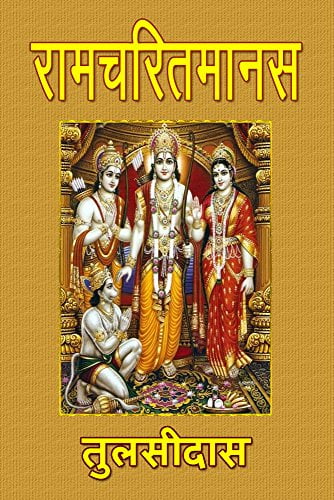Author: Goswami Tulsidas
About the author:
Goswami Tulsidas was a revered Hindu poet-saint, philosopher, and devotee of Lord Rama, best known for his epic poem “Ramcharitmanas,” a retelling of the Sanskrit Ramayana in the Awadhi language. Born in the 16th century in North India, Tulsidas is considered one of the greatest poets in Indian literature and a significant figure in the Bhakti movement. His works have had a profound impact on the cultural, spiritual, and literary traditions of India.
Life and Background
Early Life:
- Tulsidas was born in 1532 CE in the town of Rajapur, in the Banda district of Uttar Pradesh, India. According to tradition, his birth name was Ram Bola. He was orphaned at a young age and faced many hardships during his childhood.
Transformation and Spiritual Journey:
- Tulsidas’s life took a significant turn when he met his spiritual guru, Narharidas, who initiated him into the worship of Lord Rama. Inspired by his guru and the stories of Rama, Tulsidas dedicated his life to the path of devotion (bhakti).
Literary Contributions:
- Tulsidas spent a significant part of his life in Varanasi, Ayodhya, and other holy cities, composing devotional poetry and spreading the message of love and devotion to Lord Rama.
Major Works
Ramcharitmanas:
- Content: The “Ramcharitmanas” is Tulsidas’s magnum opus, written in the vernacular Awadhi language. It narrates the life and exploits of Lord Rama, paralleling the Valmiki Ramayana but with additional emphasis on bhakti and accessible storytelling.
- Structure: The epic is divided into seven books (kandas), following the same structure as the Valmiki Ramayana: Balakanda, Ayodhyakanda, Aranyakanda, Kishkindhakanda, Sundarakanda, Lankakanda (Yuddhakanda in Valmiki’s version), and Uttarakanda.
- Significance: The “Ramcharitmanas” made the story of Rama accessible to the common people, as it was written in a language they could understand, unlike the Sanskrit Ramayana. It is revered as scripture by millions of Hindus and is recited in homes and temples across India.
Other Works:
- Hanuman Chalisa: A 40-verse hymn in praise of Lord Hanuman, known for its powerful devotional and protective qualities.
- Vinaya Patrika: A collection of devotional hymns and prayers to Lord Rama, expressing deep humility and devotion.
- Dohavali: A collection of dohas (couplets) that convey moral and spiritual teachings in a concise and impactful manner.
- Kavitavali: A series of poems extolling the virtues of Lord Rama and the principles of dharma.
Key Themes and Teachings
Bhakti (Devotion):
- Tulsidas emphasized pure and selfless devotion to Lord Rama as the highest path to spiritual liberation. His works celebrate the loving relationship between the devotee and the divine.
Dharma (Righteousness):
- The “Ramcharitmanas” and other writings of Tulsidas uphold the principles of dharma, highlighting the importance of righteous living, moral integrity, and adherence to one’s duties.
Universal Love and Compassion:
- Tulsidas’s poetry underscores the values of universal love, compassion, and humility. He teaches that devotion to God should be expressed through love and service to all beings.
Accessibility of Spiritual Wisdom:
- By writing in the vernacular language and using simple, relatable stories and verses, Tulsidas made spiritual wisdom accessible to the masses, bridging the gap between the learned and the common people.
Influence and Legacy
Cultural Impact:
- Tulsidas’s works have deeply influenced Indian culture, particularly in North India. The “Ramcharitmanas” is recited in various cultural and religious events, including the famous Ram Lila performances that dramatize the life of Lord Rama.
Spiritual Inspiration:
- Tulsidas has inspired countless devotees with his unwavering faith and devotion. His hymns and verses continue to be sung and chanted in temples and homes, fostering a sense of divine connection and devotion.
Literary Significance:
- Tulsidas is celebrated as one of the greatest poets in Hindi literature. His poetic compositions are admired for their linguistic beauty, emotional depth, and spiritual insights.
Bhakti Movement:
- Tulsidas was a prominent figure in the Bhakti movement, which emphasized personal devotion to God over ritualistic practices and caste distinctions. His teachings contributed to the movement’s focus on love, devotion, and equality.
Conclusion
Goswami Tulsidas’s life and works have left an indelible mark on Indian spirituality, literature, and culture. Through his epic “Ramcharitmanas” and other devotional compositions, he has inspired generations to pursue a path of devotion, righteousness, and universal love. Tulsidas’s legacy as a poet-saint continues to resonate with millions, reflecting the timeless power of his devotion to Lord Rama and his commitment to spreading the message of bhakti.






